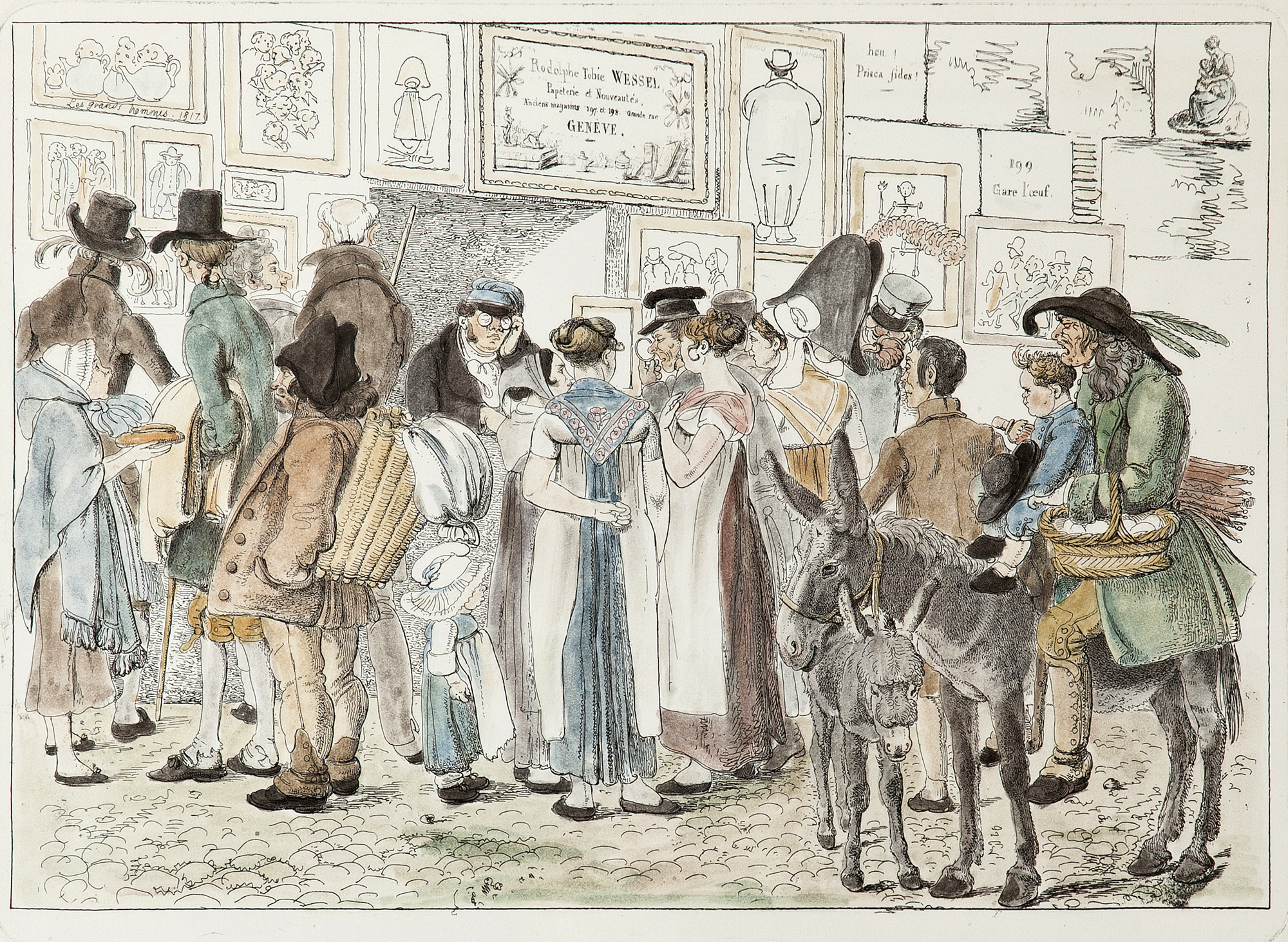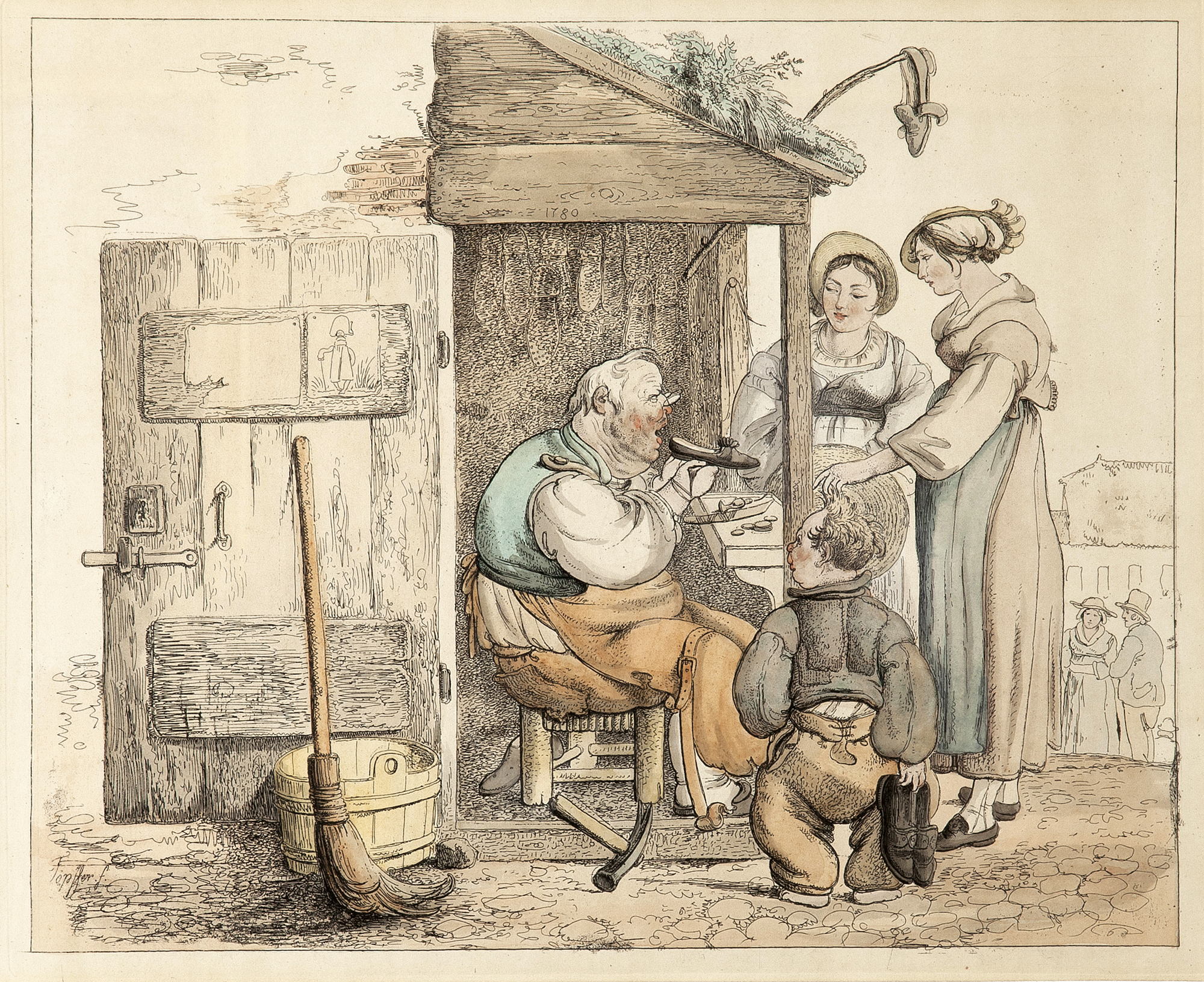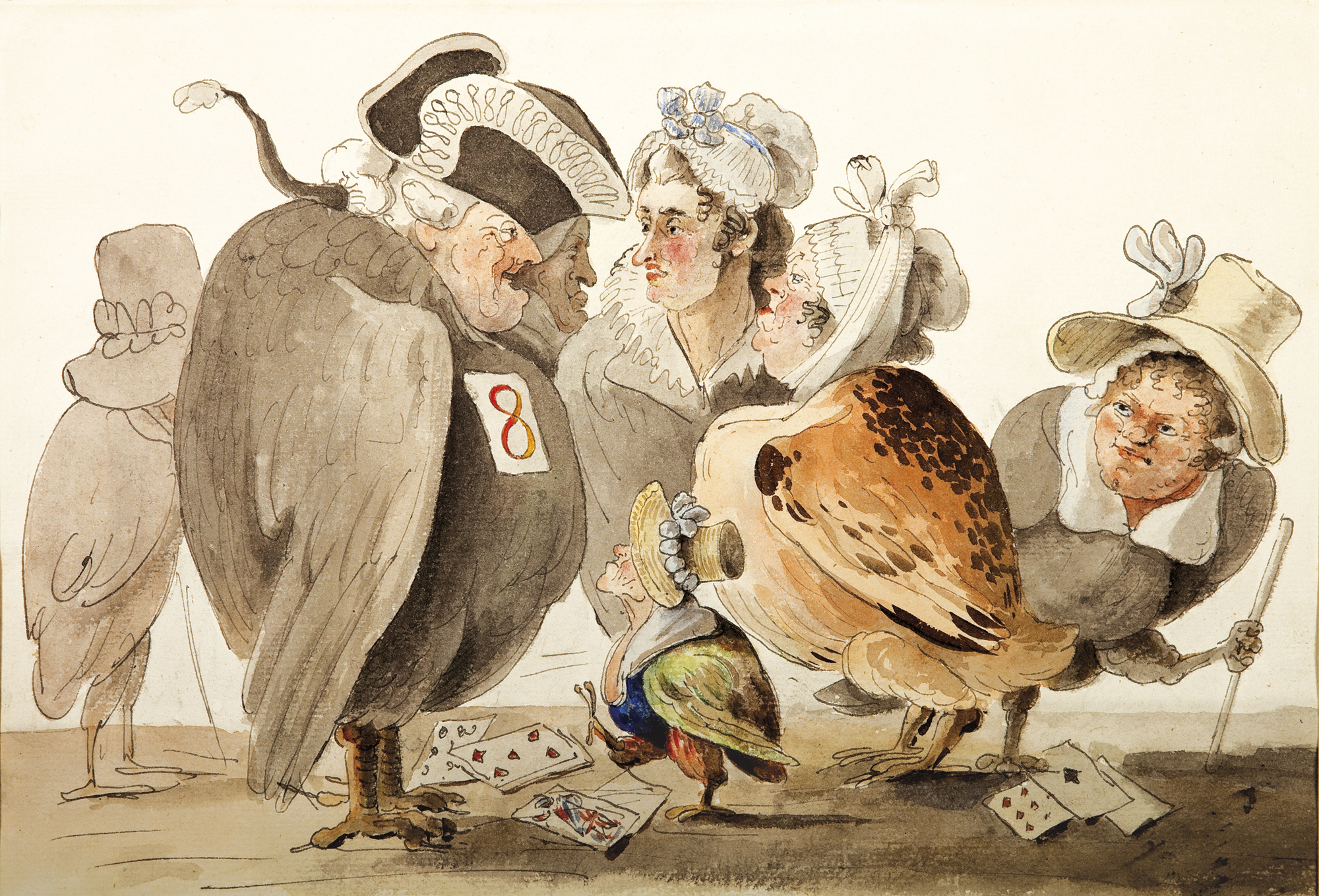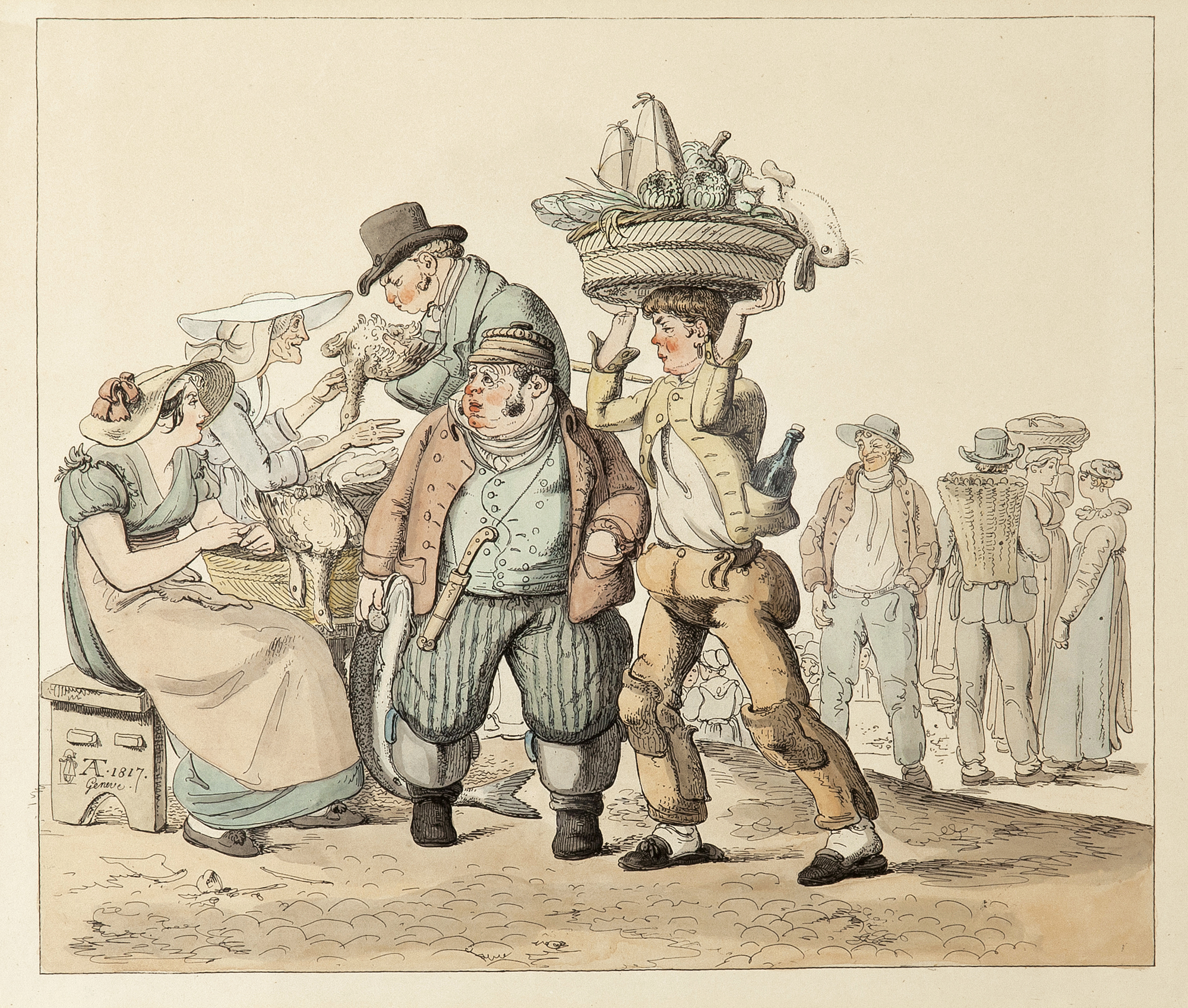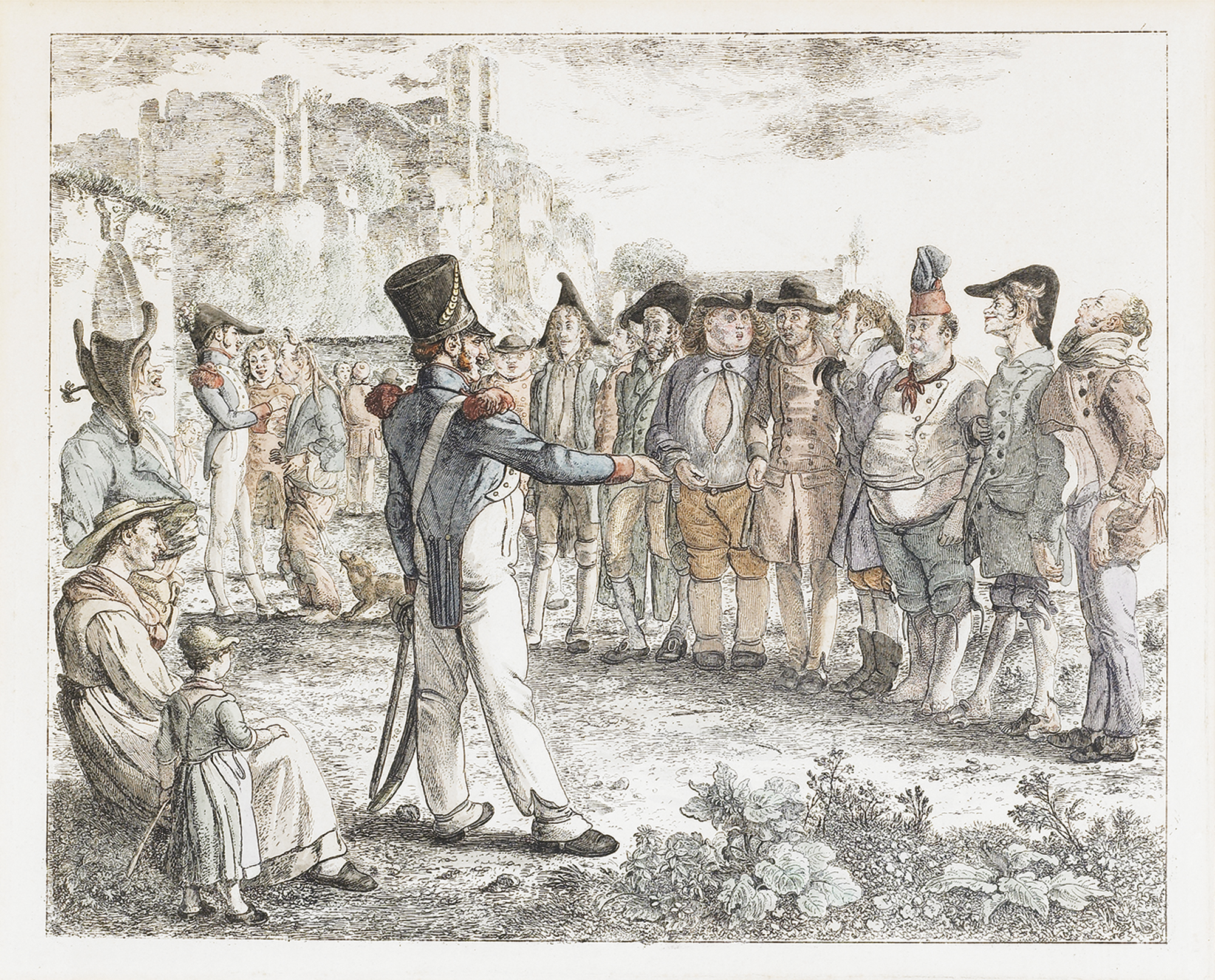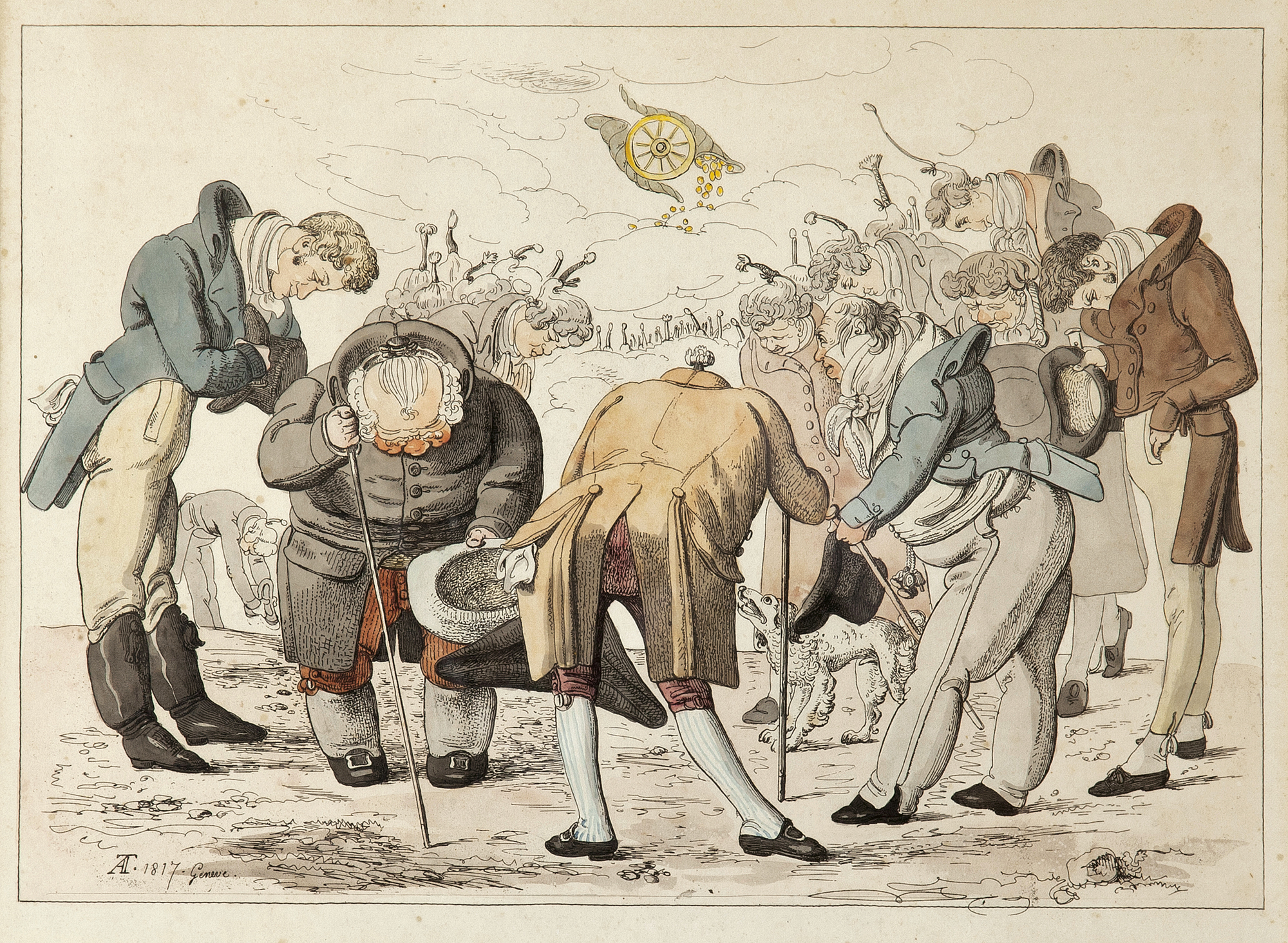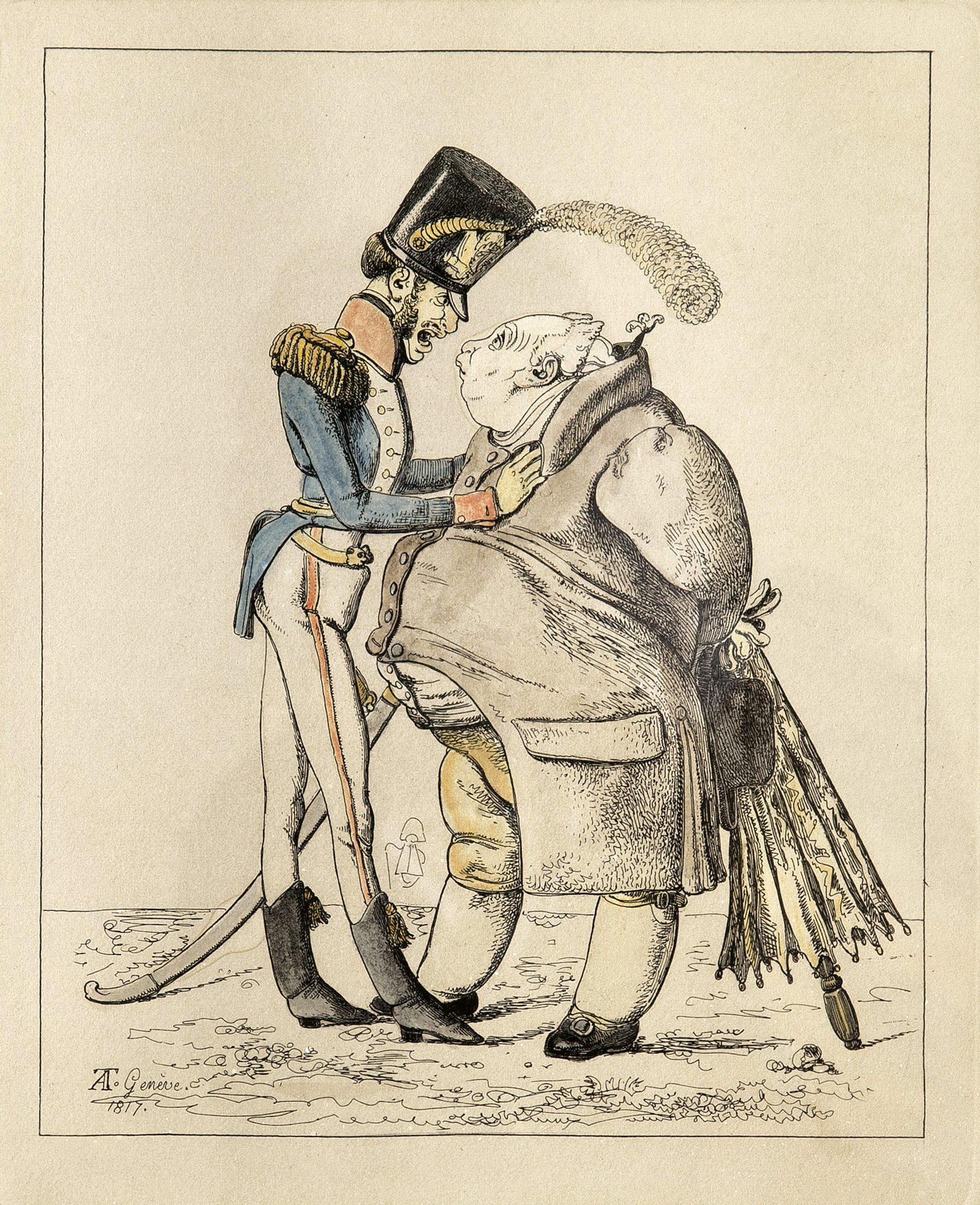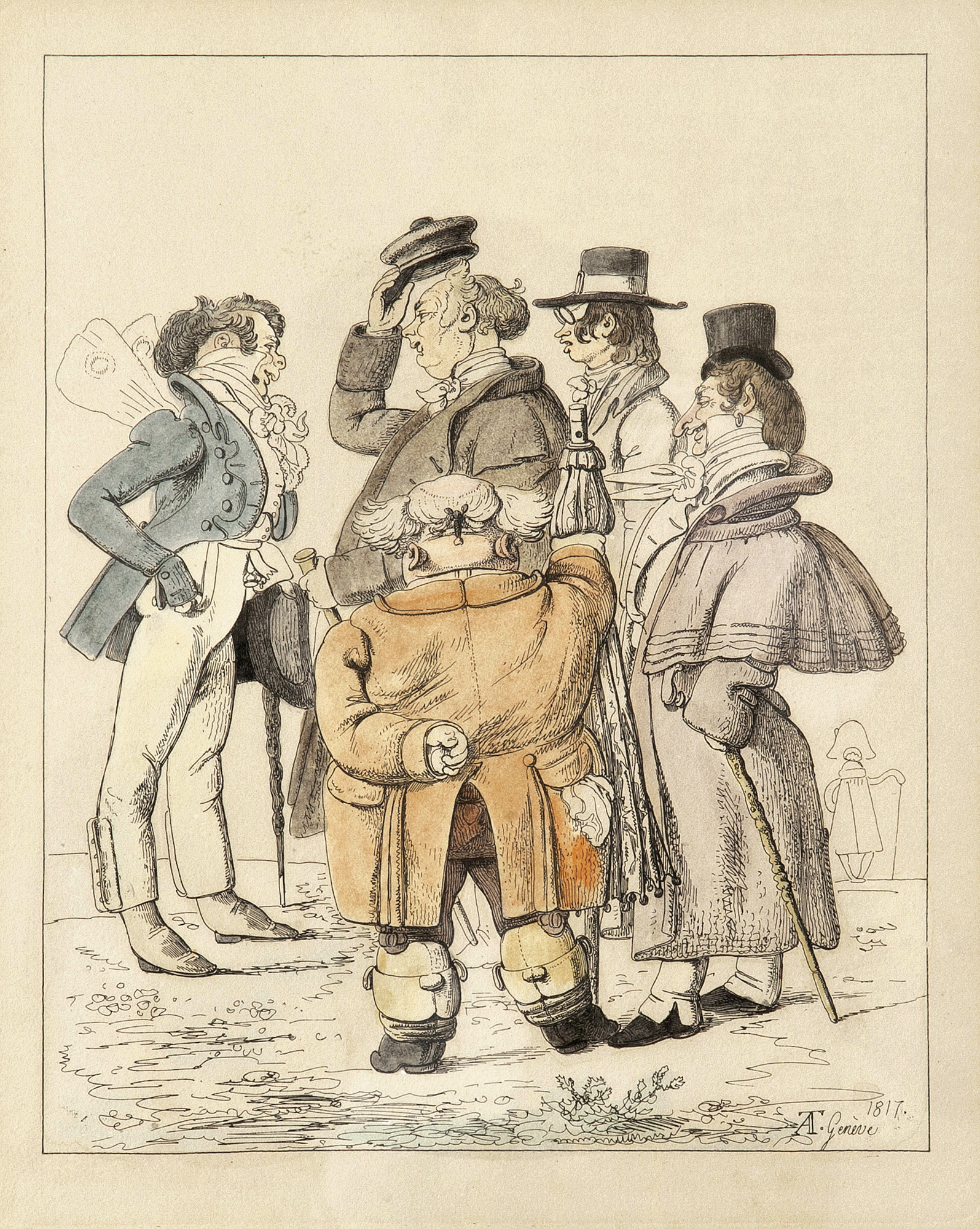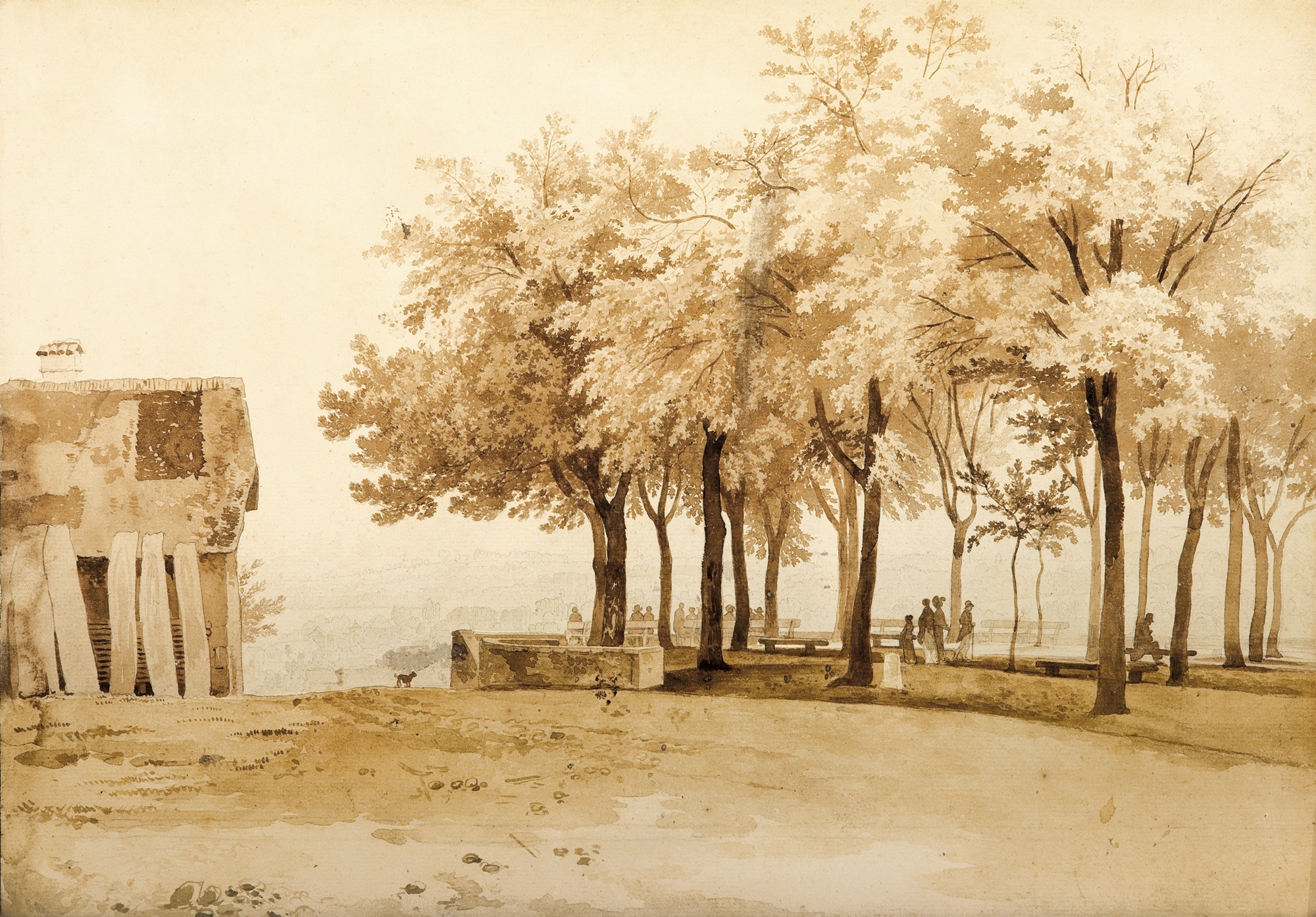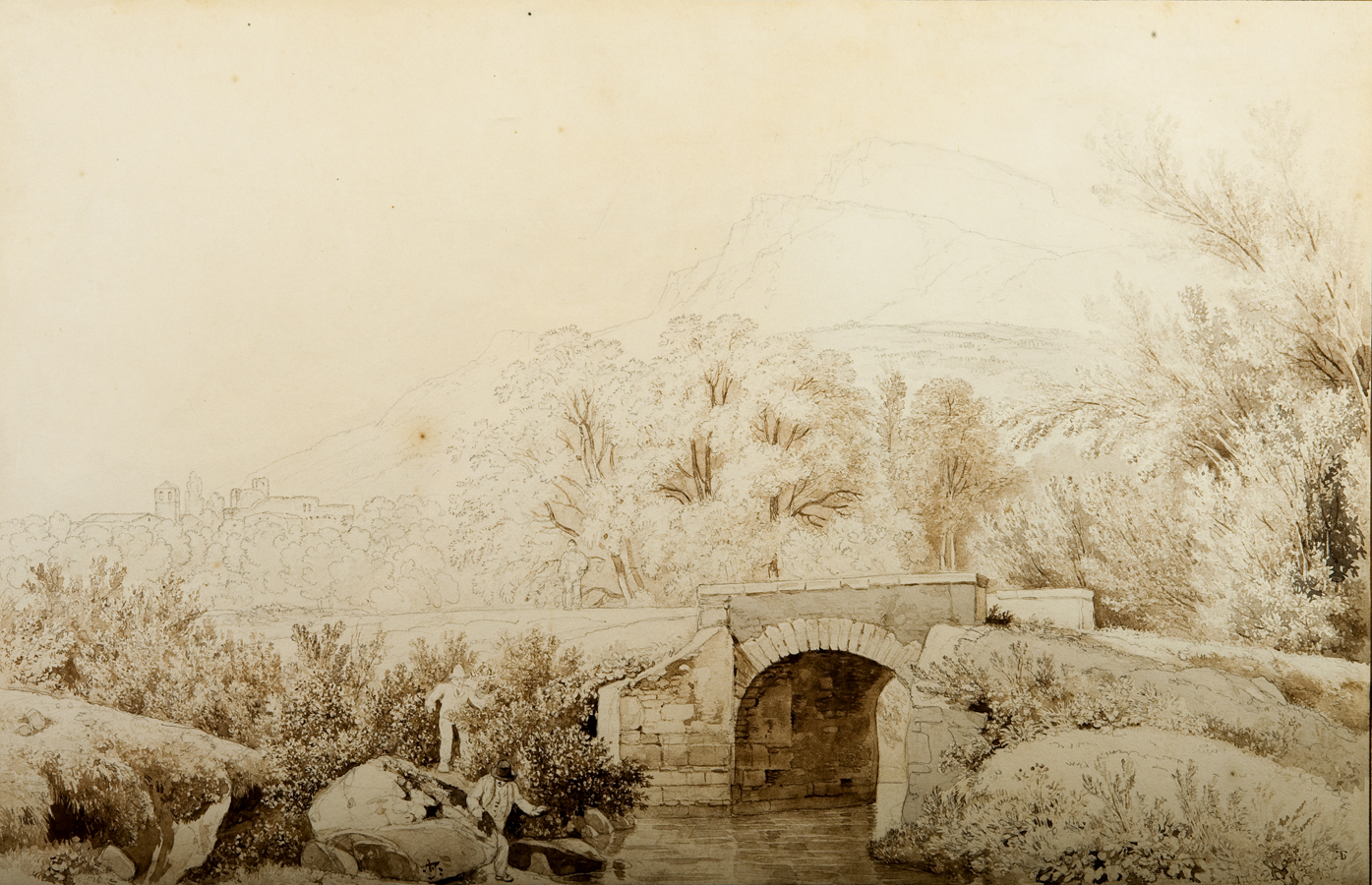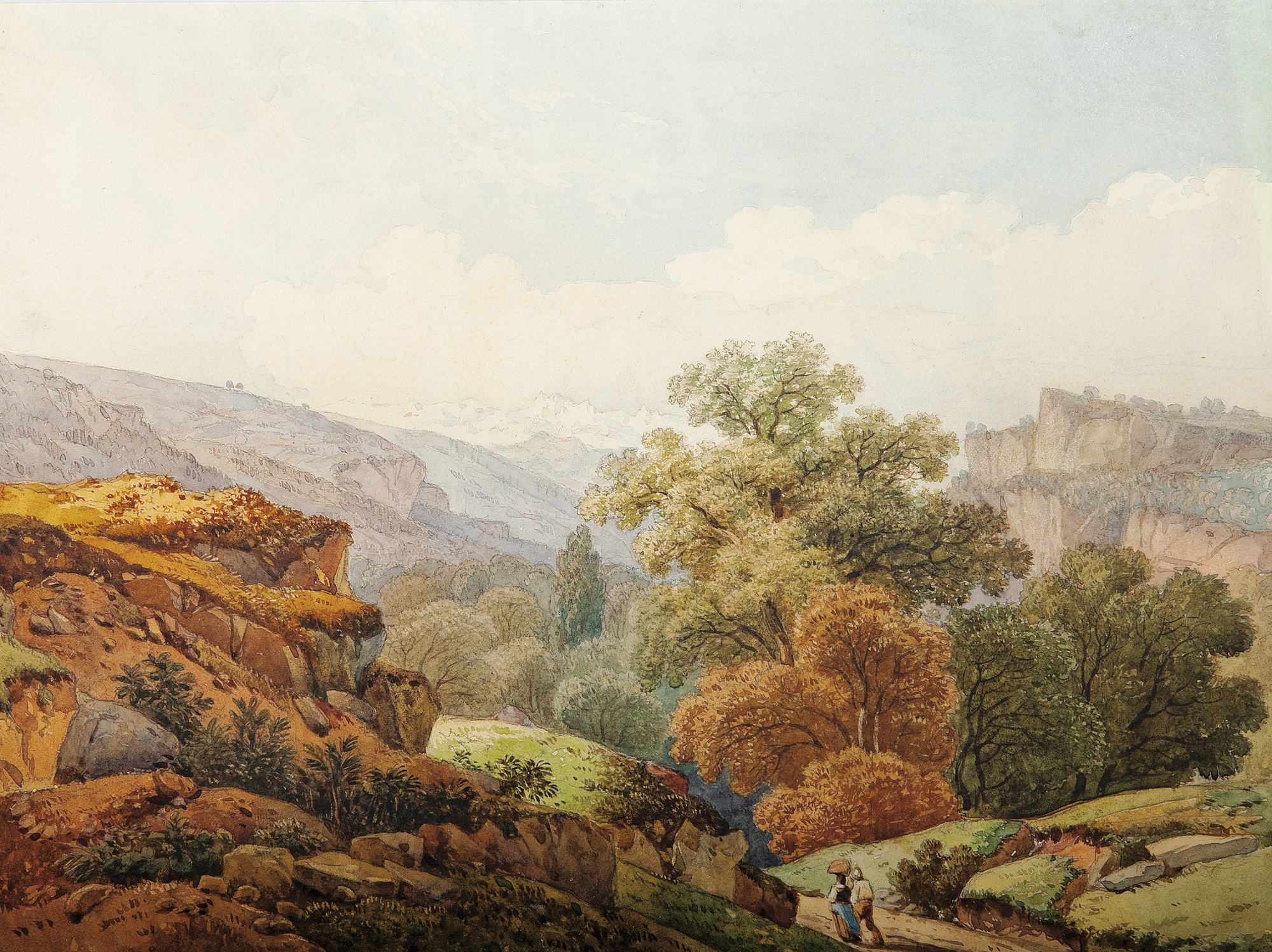Wolfgang-Adam Töpffer began his career as an illustrator, after apprenticing to an engraver. He left for Paris in 1786 to complete his training but found himself unwittingly caught up in the uprising of 1789 and returned to Geneva.
With Pierre-Louis De la Rive, he travelled up and down the region in search of landscapes which the two artists captured in studies done directly from nature. Töpffer helped to renew genre painting, drawing inspiration from Dutch models and an idyllic view of nature that particularly suited rural life in the area around Lake Geneva. His compositions depict everyday events, life in the region’s markets, for example, or out in the countryside. To that he brought a picturesque touch and a concern for depicting nature as it appeared to him.
A caricaturist from the very first, he was an enthusiastic observer of his peers, especially their rites and habits. He excelled above all in capturing the most stereotypical poses, the most expressive faces people make, and indeed, satire of Genevan society occupies a good number of his watercolours and small-format oil paintings. He stamped the genre with his inventiveness and virtuosic drawing. Self-mockery and political militancy often blend in exceptional pieces, which were only passed around amongst a small circle of friends, before eventually being hailed by the critics.
Töpffer returned to Paris in 1804, where his career was now taking off. The Mother Empress of Russia, Maria Feodorovna, and Empress Joséphine – he was the latter’s art teacher – acquired his paintings. He earned a gold medal at the Salon of 1812. During the Genevan Restoration, his clientele grew, which led him to travel in England and Italy, before settling once and for all in Geneva, where he threw himself into the political and cultural life of the city. A member of the Société des Arts, he was to devote forty years of his life to teaching in its schools.
With Pierre-Louis De la Rive, he travelled up and down the region in search of landscapes which the two artists captured in studies done directly from nature. Töpffer helped to renew genre painting, drawing inspiration from Dutch models and an idyllic view of nature that particularly suited rural life in the area around Lake Geneva. His compositions depict everyday events, life in the region’s markets, for example, or out in the countryside. To that he brought a picturesque touch and a concern for depicting nature as it appeared to him.
A caricaturist from the very first, he was an enthusiastic observer of his peers, especially their rites and habits. He excelled above all in capturing the most stereotypical poses, the most expressive faces people make, and indeed, satire of Genevan society occupies a good number of his watercolours and small-format oil paintings. He stamped the genre with his inventiveness and virtuosic drawing. Self-mockery and political militancy often blend in exceptional pieces, which were only passed around amongst a small circle of friends, before eventually being hailed by the critics.
Töpffer returned to Paris in 1804, where his career was now taking off. The Mother Empress of Russia, Maria Feodorovna, and Empress Joséphine – he was the latter’s art teacher – acquired his paintings. He earned a gold medal at the Salon of 1812. During the Genevan Restoration, his clientele grew, which led him to travel in England and Italy, before settling once and for all in Geneva, where he threw himself into the political and cultural life of the city. A member of the Société des Arts, he was to devote forty years of his life to teaching in its schools.
